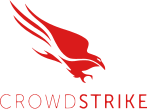
Data privacy, cybersecurity, and risk management aren’t just corporate buzzwords, they’re everyday realities for anyone who handles digital information. From freelancers storing client files to companies processing payment data, everyone is expected to comply with a growing maze of laws and frameworks.
That’s where compliance software solutions come in. These tools keep users aligned with regulations automatically, reducing the risk of fines, breaches, and human error. They’re no longer just for large corporations, they’re now accessible to individuals, startups, and small organizations too.
In this article we’ll break down what compliance software solutions are, how they work, which features matter most, how to choose the right one, and why ongoing IT support is key to staying secure and compliant.
What Are Compliance Software Solutions?
In simple terms, compliance software is a digital platform that helps users follow rules, not moral ones, but technical, legal, and security ones.
Every industry has regulations that must be met. For example:
- GDPR (Europe’s data privacy law) regulates how personal data is stored and shared.
- HIPAA sets privacy standards for healthcare data in the U.S.
- SOC 2 and ISO 27001 define security frameworks for tech providers.
- PCI DSS governs how businesses handle credit card information.
A compliance software solution monitors your systems, flags potential issues, tracks regulatory changes, and helps generate audit reports. It keeps you “audit-ready” 24/7 without constant manual checks.
Most modern solutions include:
- Dashboards showing your compliance status in real time
- Automated alerts for violations or risks
- Centralized storage for policies, documents, and evidence
- Tools for managing user permissions and access logs
- Built-in audit reporting for inspectors or partners
As regulations evolve, compliance software updates itself to reflect new rules, giving users a moving safety net that adjusts with the law.
Why Compliance Matters
Ignoring compliance isn’t just risky, it’s also expensive. Global regulators have issued billions of dollars in fines for privacy violations and security breaches in the last few years. Even for smaller users, the costs can be serious: downtime, client distrust, or data loss.
But compliance isn’t just about avoiding punishment. It’s about trust. A freelancer using encrypted storage or a small clinic protecting patient records both build credibility through safe data practices.
It’s also about time. Manual compliance management is tedious. Tracking policies, verifying access, logging changes. Software automates these repetitive tasks so you can focus on your actual work. That said, even the smartest compliance tool needs reliable technical upkeep.
Having professional IT oversight, like the technicians at IT support Orange County, ensures your software is properly configured, updated, and secured against system vulnerabilities.
Core Features of Compliance Software
Here’s what defines a strong, modern compliance platform:
| Feature | What It Does | Why It Matters |
|---|---|---|
| Regulatory Tracking | Monitors laws like GDPR, HIPAA, SOC 2 | Keeps users up to date as rules evolve |
| Policy Management | Centralizes and updates company policies | Prevents outdated or conflicting rules |
| Risk Assessment Tools | Rates potential compliance gaps | Helps prioritize what needs fixing first |
| Audit Trail & Reporting | Tracks every action and generates reports | Simplifies audits and inspections |
| Workflow Automation | Automates reminders, escalations, and reviews | Reduces human error |
| Alerts & Notifications | Warns about violations in real time | Prevents small issues from growing |
| Access Control | Manages user roles and permissions | Keeps sensitive data safe |
| Integrations | Connects to HR, CRM, or cloud tools | Creates unified data oversight |
| Encryption & Backup | Protects stored data | Essential for meeting privacy laws |
Newer systems also use AI and machine learning to detect abnormal patterns (like access attempts from unusual locations) and trigger alerts automatically.
Types of Compliance Software Solutions
Compliance isn’t one-size-fits-all. Different industries and needs call for different types of tools.
1. Data Privacy Platforms
These help manage user consent, cookies, and data-sharing rules under GDPR, CCPA, and similar laws. They often include consent-form generators, automatic cookie banners, and data-request tracking.
2. Financial and AML Systems
Banks, lenders, and fintechs use these for anti-money-laundering (AML) checks, Know-Your-Customer (KYC) verifications, and tax reporting compliance.
3. Healthcare & HIPAA Tools
Designed for clinics and health systems, these secure electronic health records (EHRs), control access, and manage patient-data audits.
4. IT Security & Risk Platforms
Focus on SOC 2, ISO 27001, or NIST frameworks, often part of broader GRC (governance, risk, and compliance) solutions. They integrate directly with cloud infrastructure and identity systems.
5. Corporate Governance Systems
These track internal policies, training compliance, and ethical reporting. They’re common in manufacturing, education, and public organizations.
6. Environmental and ESG Compliance
Used by companies tracking sustainability, emissions, or workplace safety. Often overlaps with governance reporting software.
While each category has a different purpose, all share the same core goal, which is automating manual compliance and reducing risk.
How Compliance Software Works
At its heart, compliance software follows a simple process:
- Collects Data: The system continuously gathers information from connected sources — like employee activity logs, access controls, and document changes.
- Compares Against Rules: It checks those inputs against predefined regulations (GDPR, HIPAA, ISO 27001, etc.).
- Scores Risk: Non-compliant or suspicious actions trigger higher risk scores.
- Alerts & Reports: Users receive real-time notifications, and detailed audit trails are automatically logged.
In many cases, software runs entirely in the cloud. This means:
- Automatic updates when regulations change
- Remote monitoring of compliance across multiple systems
- Easier collaboration between departments or partners
For more privacy-sensitive operations, on-premise installations are also common, especially in healthcare and government.
No matter the setup, one constant remains: it must be properly maintained. Compliance software can’t protect you if the system is outdated or misconfigured. That’s why IT teams or managed service providers like Orange Crew play such an essential role in keeping everything patched and secure.
How to Choose the Right Compliance Software
With dozens of tools available, choosing the right platform depends on your goals, budget, and tech environment. Here’s a simple approach recommended by Orange Crew’s technicians:
Step 1: Define Your Compliance Needs
Are you managing healthcare data, client payment details, or customer emails? Your use case determines which frameworks matter. HIPAA for health, PCI DSS for payments, GDPR for data privacy, SOC 2 for SaaS products.
Step 2: Check Ease of Use
Look for intuitive dashboards, simple reporting, and clear alerts. Complex systems may be powerful, but they’re useless if you can’t navigate them.
Step 3: Evaluate Scalability
If your workload or team grows, your software should handle more users or frameworks without rebuilding from scratch.
Step 4: Prioritize Automation
The best systems run quietly in the background generating reports, tracking changes, and reminding you about renewals automatically.
Step 5: Confirm Integrations
Ensure it connects smoothly with your existing CRM, HR, or accounting tools. Integration reduces duplication and error.
Step 6: Compare Support and Cost
Some tools offer transparent pricing; others charge by feature or user. Review both the subscription fee and support availability.
Step 7: Secure It Properly
Compliance isn’t only about paperwork — it’s about digital security. Use encryption, multi-factor authentication, and regular backups.
Even the most advanced compliance platform needs consistent system updates. Having professional support keeps software running optimally, especially when frameworks evolve or new threats emerge.
Common Compliance Challenges
Despite automation, compliance software isn’t magic. Users still face recurring challenges that can undermine results:
- Constantly Changing Regulations: Keeping up with global privacy laws requires frequent updates.
- Human Error: Misconfigured permissions or skipped updates can still cause violations.
- Integration Gaps: If compliance tools don’t sync with your IT systems, data may go unchecked.
- Shadow IT: Employees using unapproved apps create blind spots for compliance tracking.
- Limited Awareness: Many users simply don’t know what counts as non-compliance.
To reduce these risks, maintain a regular IT maintenance schedule. System checks, update audits, and user-training sessions go a long way.
How IT Support Strengthens Compliance Software
This is where expertise becomes invaluable. Compliance software is powerful, but without skilled IT maintenance behind it, its protection can quickly fade. Here’s how professional IT support enhances your compliance setup:
1. Proper Installation and Configuration
Technicians ensure your compliance software integrates correctly with your existing systems, avoiding the setup mistakes that cause reporting gaps or data errors.
2. Security Layering
Orange Crew reinforces your compliance tools with additional safeguards like network firewalls, encryption, and zero-trust access policies, ensuring sensitive data remains protected.
3. Continuous Monitoring
Through managed IT services, your systems can be monitored around the clock for unusual CPU usage, access anomalies, or outdated compliance modules.
4. Patch and Update Management
Regulations evolve constantly. IT support keeps software versions current, so compliance checks stay accurate.
5. Rapid Incident Response
If a compliance issue or data breach occurs, professional support helps contain, document, and fix it, minimizing downtime and exposure.
6. Employee Guidance
IT experts can train staff on how to handle alerts, interpret compliance dashboards, and avoid mistakes that trigger violations.
So even though compliance tools automate much of the heavy lifting, human oversight from trusted IT professionals ensures the automation stays reliable and secure.
For businesses and organizations in California, IT support Orange County provides that peace of mind, combining local expertise with real-time monitoring.
Future Trends in Compliance Software
The compliance field is evolving quickly. Here’s what’s shaping the future:
- Artificial Intelligence: Predictive models will soon anticipate compliance failures before they occur.
- Continuous Auditing: Instead of quarterly reviews, compliance will become a live process, constantly verified by cloud-based sensors.
- Integrated Cybersecurity: Expect tighter merging between compliance and threat-detection platforms.
- User Transparency: Individuals will gain clearer control over how their data is processed, forcing compliance systems to add user-facing dashboards.
- Simplified Interfaces: As compliance becomes a mainstream concern, interfaces will grow more visual and beginner-friendly.
Staying ahead of these trends is about maintaining a flexible, well-supported infrastructure that can adapt as regulations change.
Final Thoughts
Compliance software solutions take the guesswork out of staying on the right side of laws like GDPR, HIPAA, and SOC 2. They automate monitoring, streamline reports, and provide peace of mind that your data practices meet industry standards.
But these systems aren’t self-sustaining. Like any technology, they rely on proper configuration, updates, and monitoring. That’s where experts step in, offering hands-on expertise to keep your compliance systems secure, efficient, and always audit-ready.
If you’re ready to strengthen your data protection and streamline your compliance efforts, reach out today for expert IT support in Orange County and discover how simple compliance can be when it’s backed by real technical care.
FAQs
What is a compliance software?
Compliance software is a tool that helps you follow legal, security, and privacy rules automatically. It tracks requirements, monitors activity, flags issues, and produces audit-ready reports so you don’t have to manage everything by hand.
What are GRC software solutions?
GRC (Governance, Risk, and Compliance) platforms bring internal policies, risk management, and regulatory compliance into one place. They help you set rules, measure risk, automate workflows, and prove you’re following the standards that matter to you.
What is a compliance solution?
“Compliance solution” is an umbrella term for the software, settings, and processes you use to stay within the rules (GDPR, HIPAA, SOC 2, PCI DSS, and more). It may include one tool or a stack of tools plus documented policies, training, and regular audits.
What are the three types of compliance?
- Regulatory (laws and industry rules like GDPR, HIPAA, PCI DSS),
- Internal/Corporate (your own policies and procedures), and
- Contractual (requirements you agree to with customers, partners, or vendors).
How often should compliance software be updated?
Continuously, if possible. Cloud tools usually update on their own; on-prem software should be checked at least monthly for patches, new rules, and security fixes.
How does IT support fit into compliance management?
IT support keeps your tools configured correctly, patched, backed up, and monitored. If you’re a business and want hands-on help, Orange Crew provides reliable IT support to keep your compliance setup stable and audit-ready.








